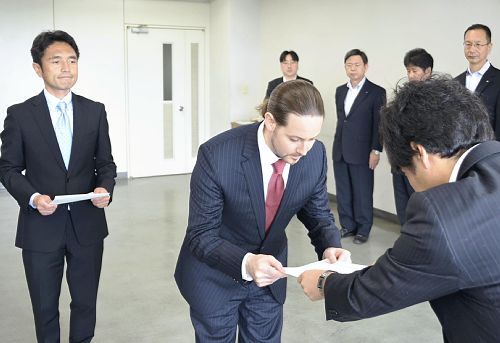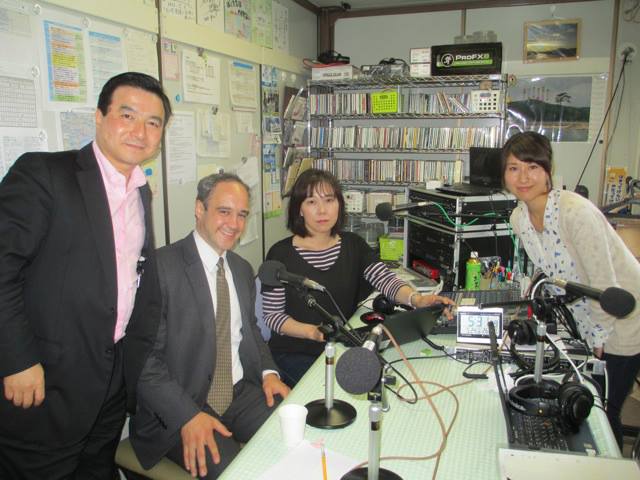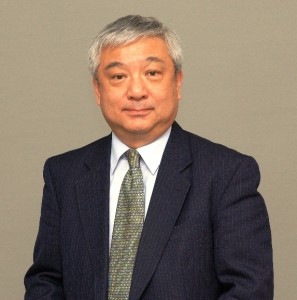CLAIR’s JET Streams Newsletter 06.07.13
Via CLAIR:
Please find below a link to the online version of the JET Streams newsletter. JET Streams is distributed to all JET alumni who request it and have registered an email address with CLAIR.
http://www.jetprogramme.org/e/former/jetstreams12-13.html
JETAANC Pacific Bridge: Alumni Spotlight with Xander Peterson
Spotlight on: Xander Peterson (Miyazaki, 2009-12) JET Program Coordinator for San Francisco. Xander became the new coordinator earlier this year.
Why did you apply for the position?
I applied for the position because I truly believe in the purpose of JET, and I want to see the program flourish. The cultural exchange and friendships that I built with my students and community changed my life and hopefully influenced theirs, too. I knew that it wasn’t just me who felt this way; nearly everyone who goes on JET is profoundly impacted in some manner.
Did you ever see yourself becoming the Program Coordinator during JET/JET application process?
When I first applied to JET, I didn’t see myself as becoming the Program Coordinator. However, after my first year as an ALT, I was in love with the program and began to think of ways that I could support not just the JETs in my area but all JETs across Japan and the program as a whole. At the end of my final year in Japan, I applied to CLAIR but to no avail. A couple of months after I returned to Santa Cruz, the position of JET Program Coordinator (for Northern California / Nevada) opened up. I applied and got the job.
How do you see yourself working with JETAANC?
I see myself as the liaison between the Consulate and JETAANC. I’d like to do whatever I can to build a strong working relationship between the two. One area that I think we can work on is connecting our local JET alums with the local Sister City Associations. Local Sister City Associations are a great place for alumni to share their Japan experiences and adventures with American students who are interested in learning more about Japanese language and culture.
Read More
JET alum Jim Gannon continues his work on behalf of JCIE in support of Rikuzentakata and other areas
***************
Via the Japan Center for International Exchange’s Facebook page. A nice post about the work that Jim Gannon (Ehime-ken, 1992-94), Executive Director of the Japan Center for International Exchange (JCIE/USA), has been doing in Tohoku on behalf of his organization. Jim is also a member of JETAA USA’s Board of Advisors and the JETAA USA Disaster Relief Fund Committee:
JCIE/USA’s Jim Gannon was in Tohoku last week, where he met with grantee AidTAKATA, an NGO that operates Radio FM Rikuzentakata to bring local news, music, and informational programs to people living in this hard-hit area. The station is the only source of local information for many residents in temporary housing, and it is working to strengthen community ties.
During his visit, the station featured a program with a lawyer who provides advice on the legal issues people in the disaster zone have to cope with (rebuilding regulations, insurance settlements, land titles, etc.). They also briefly interviewed Gannon during the program and took the opportunity to express their gratitude to all of the donors to the JCIE fund.
While on air, a small earthquake struck and the announcer immediately provided information on the epicenter and strength and to reassure listeners.
Former AJET Chair Announced as Senior Staff of Osaka Prefectural BoE’s New English Education Reform Team

Former AJET Chair Matt Cook (Osaka-fu, 2007-12) receives his appointment to the Education Reform Team for Osaka Prefecture’s Board of Education.
Former AJET Chair Matthew Cook (Osaka-fu, 2007-12) has been announced as “Shusa” (“Senior Staff”) at the Osaka Prefectural Board of Education. His role will be working with all levels of English Educational Affairs and working as a member of the new English Education Reform Team.
Matt may be the first ever non-Japanese person to hold a senior level full-time position at a Board of Education in Japan*. (If anyone is aware of other examples, please post in the comment section.) Among other things, it is also encouraging to see a JET alum with an opportunity to play a substantive role in English education reform in Japan.
Matt has spent the past ten months working for the Osaka Prefectural Board of Education as a the Program Coordinator for their Native English Teacher (NET) Program (somewhat akin to being a JET Program Coordinator at CLAIR) following his completion of five years as a JET ALT in Osaka-fu and serving one year as AJET’s national council Chair.
Omedetou, Matt-san! Ganbatte kudasai and yoroshiku onegaishimasu!
Here’s a link to the article about the announcement in the Yomiuri Shimbun (Japanese only): http://www.yomiuri.co.jp/kyoiku/news/20130522-OYT8T00381.htm (If anyone readers could provide a short summary in the comment section, by the way, that would be greatly appreciated.)
*Note: I learned there have been other former JETs and other non-Japanese who worked as advisors and in other roles for the Osaka Prefectural Board of Education. However, my understanding is that none of them worked at the policy-making level. Here’s a 2003 article from The Guardian that quotes one in particular who seemed to have some good insights into reform and Japanese language education, Huw Olphant: http://www.guardian.co.uk/education/2003/jan/30/tefl Huw currently works as Head of Society and English Education for the British Council in Japan and was apparently mentioned in Importing Diversity, a book about the JET Programme published in 2000.
*********
Update 06.01.13
*********
Thanks to current JET Kevin McCoy for summarizing some of the above Daily Yomiuri article:
このうち、元滋賀県立高英語教諭でハーバード大教育大学院で教育修士号を得た武田浄さん(46)と、府内で外国語指導助手などを約6年間務めた米国籍のマシュー・クックさん(34)の2人を、この日、任期付き職員として採用した。他の5人は、英語に堪能な府教委職員で、従来の担当と兼務する。
Two the seven team members, Takeda Kiyoshi (46), a former English teacher at Shiga Prefectural High School, who received his Master’s degree at Harvard University Graduate School, and Matthew Cook (34), an American who worked for approximately 6 years as an ALT for the prefecture, were hired as “shokuin” (staff) with a limited period of appointment. The other 5 members are all staff at the prefecture’s Board of Education with exceptional English skills who will also serve their usual “tanto” (staff) positions.
Kevin also found the following report which is a little more specific with regard to titles:
http://www.nnn.co.jp/dainichi/news/130521/20130521032.html
同チームは7人で構成。これまで英語教育に携わってきた職員に加え、ハーバード大教育大学院で教育修士号を取得し、国内の公立中高で教諭経験がある武田浄さん(46)と、バージニア工科大卒で府教委の外国人英語指導員などに就いてきた米国国籍のマシュー・クックさん(34)を、それぞれ参事と主査で任期付き採用した。武田さんの任期は2016年3月末までで、クックさんの任期は2015年3月末まで。
The team is made up of 7 members. In addition to staff who have been involved in English education until now, Kiyoshi Takeda (46) […] and American national […] Matthew Cook (34) were each hired as “sanji” and “shusa”, respectively. Takeda’s appointment is until the end of March 2016, and Cook’s appointment will last until the end of March 2015.
Akita Global Network Blog
Akita Prefecture has been publishing a newsletter for the last few years (which has been posted to JETwit) in an effort to stay connected with the community of foreigners who have lived in Akita. Now it’s a blog, and there’s a way for all current and former Akita denizens to contribute. To learn more contact saito-sayori [at] pref.akita.lg.jp.
Also a reminder you can join the Akita Prefecture JET Alumni group on LinkedIn to connect with other Akita JETs. And here’s the link to see all of the Prectural JET Alumni groups on LinkedIn.
**********************
Akita Global Network Blog
秋田グローバルネットワークブログは、秋田県とゆかりのある外国の方々と継続的なネットワーク関係を維持するために、秋田グローバルネットワークメンバーからの海外情報や、秋田県の旬な情報を共有し発信するブログです!
Akita Global Network aims at maintaining an ongoing relationship between Akita Prefecture and foreign people who have been associated with Akita through international exchange projects, etc. We share information about Akita and foreign countries contributed from Akita Global Network members.
For the JET who has everything: The Tokyo History Over Time Puzzle
Originally posted to the Pacific Northwest JETAA Facebook group by Sabrina Holliday Carlin:
“For the JET who has everything…$40 at Snapdoodle Toys in Kenmore!””
JET alum Japanese teacher’s class visited by Delaware governor
Thanks to Virginia Murray for catching this article and posting it to the JETAA Southeast Facebook group. It seems that Linnea Bradshaw, a fellow JET of Virginia’s from 1988, is a Japanese teacher at a high school in Delaware whose class was recently visited by Delaware’s Governor Jack Markell. Go JET!
Markell shares travel experiences with Appoquinimink students
Delaware’s Governor visited the Level II language class at Appoquinimink High School Tuesday morning to share his experiences in Japan and to take questions from the class he video-chatted with from the foreign country during his trip last year.
Here are some excerpts from the article:
“Governor Jack Markell told students in Linnea Bradshaw’s Japanese class Tuesday that speaking multiple languages gives them a leg-up in the job market. Delaware’s Governor visited the Level II language class at Appoquinimink High School Tuesday morning to share his experiences in Japan and to take questions from the class he video-chatted with from the foreign country during his trip last year.”
………
“Markell wasn’t the only one in the room Tuesday who has experienced Japan. Last summer, Bradshaw took 23 students from both Middletown and Appoquinimink High Schools to Japan to immerse them in the culture. Bradshaw said that her highest-level students can speak sentences, and understand, write and read Japanese.”
…….
“During his multi-city trip of the country, Markell, his wife, and staff, met with several businesses in the Miyagi area in hopes of building a stronger partnership between Delaware and Miyagi.”
Click here to read the full article on the Middletown Transcript’s website as well as see a photo of Linnea with the Governor: http://www.middletowntranscript.com/article/20130108/NEWS/130109810/0/SEARCH
Akita Global Network Newsletter – Vol 6
Thanks to Akita Prefecture for sending out the latest volume of its Akita Global Network Newsletter:
We’ve just published the latest Akita Global Network newsletter,vol.6. You can read here:
http://www.pref.akita.lg.jp/www/genre/0000000000000/1286429964066/index.html
Please share it with your family and friends. Have a nice holidays!
秋田県企画振興部学術国際局国際課
Akita Prefectural Government
主事 齋藤 小夜里 Sayori SAITO
********************
あきたファンどっとこむ!http://www.akitafan.com/
State of Colorado recognizes contributions of JET alumni to Colorado-Japan relationship
Written by JETAA USA Board of Advisors member Jessyca Livingston who also serves as the JET Coordinator at the Consulate in Denver:
The Consulate General of Japan and Consul-General Ono recently hosted the 2012 National Day Reception. Rocky Mountain JET Alumni Association Executive Officers and Board Members were among the invitees along with other Japanese Community members, business leaders and government officials (including Denver Mayor Hancock).
Every year, the State of Colorado issues a Proclamation to the Consulate General of Japan in Denver on the occasion of the National Day Reception. This year, marked as “The year of opportunity for enhanced relations, friendship and mutual understanding between Japan and the State of Colorado”, acknowledged the success of the JET Program and the many participants sent from Colorado as a key component which continues to strengthen ties between Colorado and Japan.
The number of JETs sent from the Rocky Mountain region remains strong as does the quality of JETs we send as participants. Additionally, many of our JET alums in this region remain involved in supporting and strengthening US-Japan relations in a variety of fields locally, nationally and internationally. This recognition from the State of Colorado is indeed significant to RMJETAA and to the JET Program as a whole.
JLGC Newsletter – December 2012
 Via CLAIR-NY (aka Japan Local Government Center):
Via CLAIR-NY (aka Japan Local Government Center):
The newest JLGC Newsletter is has been published and can be viewed here: http://www.jlgc.org/pdfs/en/news74.pdf
The issue includes a feature on the recent JETAA USA Conference in San Francisco as well as well-written and extremely informative report by CLAIR-NY Senior Researcher Matt Gillam following his recent visit to Ishinomaki City, Miyagi titled, “Appearance and Reality: Recovery and Tohoku.”
“Even people who live there can sometimes be amazed at the pace of recovery. Until you talk for a while and realize there are two recoveries going on, the physical and the psychological, and there is a vast difference between what can be seen and what cannot. This point was driven home for me when I spoke with the principal of an elementary school in Ishinomaki who talked about how many problems the kids are having lately and the increase in theft, bullying, fights, and other manifestations of the stress and trauma that they bring to school from their homes.”
JLGC publishes semi-annual newsletters featuring articles on JETAA activity, sister city and sister state relationships, exchange programs, and local government issues in the United States, Canada, and Japan. The newsletter enables local government officials, JLGC’s fellowship program participants, and other interested persons to stay abreast of JLGC activities and research efforts. At the same time, the newsletter provides those outside of the organization with the opportunity to share their ideas and opinions.
Click the following link to subscribe to the JLGC Newsletter: http://www.jlgc.org/NewsLetterEmailEntry.aspx
Rikuzentakata now a hit on Facebook
Thanks to Vancouver-based JET alum Alison Dacia Brown (Iwate-ken, Rikuzentakata-shi, 2005-08) for posting about this to Facebook. From a JET perspective, it seems to offer a communications model for Japanese local governments in which perhaps JETs and JET alumni could play a helpful role:
Update: Here’s the Rikuzentakata Facebook Page
Saturday, Nov. 24, 2012
Tsunami-hit city a hit on Facebook
Kyodo
MORIOKA, Iwate Pref. — The coastal city of Rikuzentakata, Iwate Prefecture, devastated by last year’s earthquake and tsunami, has gotten global attention thanks to its use of Facebook.
In July, the city set up an official page in both Japanese and English on Facebook, the first municipality to do so among those on the northeast coast that bore the full brunt of the March 2011 catastrophe.
Since then, officials have been updating the page to display and keep the world updated on the reconstruction process, an unusual move for a municipal government. The posts, mostly written in Japanese, include articles on Rikuzentakata from Japan and around the world, advisories on earthquakes and floods, and the mayor’s participation at a local festival.
When Rikuzentakata’s officials made a fundraising page in English to help preserve the city’s famed “miracle pine tree,” donations came in from around the world. Read More
JQ Magazine: JQ&A with Matthew Gillam, Senior Researcher at the Japan Local Government Center

“When you come back from Japan, people say, ‘You know Japanese, you’ve been abroad, you should be able to get a job anywhere.’ You soon realize that it doesn’t work that way. Alumni coming back should look at things you did in different light: what did you fundamentally do, and take away from that?”
By Adam Lobel (Nagano-ken, 2000-02) for JQ magazine. Last year, Adam returned to New York after 10 years in Japan, where he researched satoyama (traditional landscape of Japan) as a master’s student, and collaborated with Japanese policymakers in science and technology while working at a think tank. Adam currently helps manage his family’s business, a land use law firm in Manhattan, and looks forward to contributing to New York’s green building movement.
Born and raised in Marshalltown, Iowa, Matthew Gillam was hooked on Japan after visiting when he was 17. After college, he lived in Japan for eight years, and then returned to the U.S., where he completed a master’s at Columbia’s School of International and Public Affairs (SIPA). Matt has spent the past 14 years as a researcher at the Japan Local Government Center (JLGC), discovering and sharing best practices from local governments in North America with his colleagues in New York and Japan.
By encouraging organizational discipline and providing tools to build strong networks, Matt has helped strengthen the JET Alumni Association, thus helping thousands of JET participants smoothly transition to life back home. He promotes JETAA’s role an important stakeholder in productive business and cultural relationships with Japanese localities, helping broaden the JET Program’s mission long after participants return home.
In this thought-provoking interview, JQ spoke with Gillam about what it was like to study Japanese at the University of Iowa in the 1980s, life in Japan before the existence of JET, and the kindness and hard work JET families displayed in the aftermath of 3/11. He emphasizes that JET—an experiment in grassroots internationalization—has changed how the world thinks about Japan. Matt gave this interview before heading to Japan, where he spent four days with It’s Not Just Mud (INJM), a non-profit volunteer organization based in Ishinomaki.
How did you become interested in Japan?
I was exposed to Japan when I was seven: my sister spent the summer of 1969 as an exchange student in Yamanashi. She fell in love with Japan, and told us about it after returning home. Eventually she went to live in Japan, teaching English at Sony Language Labs. In 1979, just before my senior year of high school, my mother and I went to visit. Before that trip, I never liked to travel. Suddenly, I was in a completely new place. I realized there was a bigger world, and it was interesting. That’s when I fell in love with Japan, its people, food, art and architecture.
After my sister returned to the U.S., she placed a Japanese student in a nearby town. I fell in love with that student, who eventually became my wife. In college I flunked out of forestry, my first major and, looking for something new, got into Japanese language. I did a year abroad at Kansai Gaidai in Osaka, and spent eight more years in Japan after graduating.
How did people react to your decision to study Japanese? What was Japanese study like at the University of Iowa in the 1980s?
Some people did not understand my decision to study Japanese, especially because it was a small Midwestern town. Their reaction was, “Why Japanese?” This was 1982: Japan was just beginning to emerge as a major economic rival, and Japanese culture hadn’t permeated the Midwest yet. It was a strange thing to do.
My sister understood, and my mom understood, but other family members and friends did not. In those days, some people’s reaction to Japan was still influenced by the Second World War: “These people were enemies; I am not comfortable with them.” That only got worse through the eighties with trade friction.
Study materials were primitive by today’s standards: Japanese textbooks by Prof. Eleanor Jorden, a kanji dictionary, and language lab with cassette tapes. Our professor, Thomas Rohlich (now at Smith College) started the same day I did. We had a Japanese teaching assistant from Tokyo, but most of the teachers were white men.
There were no Japanese restaurants or pop culture. Fisher Control, a company in my hometown, employed a Japanese engineer, who had relocated with his wife. At the beginning of my first year of college, there were 30 students, the biggest class they had ever had! That number slowly decreased, until there were only six or eight students by my third year. There were a couple of Japanese students on campus who became casual friends. Prof. Rohlich’s wife was from Kyoto, and she hosted a gyoza party. That was about it.
CLAIR Chairperson Yoko Kimura talks about JET in Mainichi feature
Below is a feature (in Japanese) on CLAIR Chairperson Yoko Kimura who talks about the JET Programme. (If anyone feels the urge, feel free to post an English summary or translation in the comments section of this post).
http://mainichi.jp/opinion/news/20121108ddm004070166000c.html
毎日新聞 2012年11月08日 東京朝刊
◇「JET」国内でもより理解を
尖閣諸島をめぐる日本と中国、竹島をめぐる日本と韓国の厳しい対立は日本の外交力を強化する必要性を痛感させた。とりわけ草の根交流は個人間の深い友情や強い信頼関係に基づくため、ちょっとやそっとでは壊れない。国際関係を安定させる大きな役割を果たす。
草の根交流のうち、世界最大級の人的交流事業で、海外でむしろ認知度が高い「JETプログラム」(語学指導等を行う外国青年招致事業)をご存じだろうか。軍事、経済力以外のソフトパワー外交の象徴として日本が胸を張れる活動だが、国内の知名度がいまだにもうひとつとすれば残念だ。
JETプログラムは、都道府県や離島やへき地等、津々浦々の市町村が招致した外国青年がALT(外国語指導助手)として小中高校で英語等を教え、あるいは、CIR(国際交流員)として役所で働くなどして国際交流を推進する。1年契約だが、最長5年まで延長が可能である。自治体国際化協会(CLAIR・クレア)は、総務省、外務省、文部科学省と連携し、プログラムを推進している。
JET参加者は日本の地域に溶け込み児童・生徒、同僚や地域住民に母国の考え方や文化、習慣などを生の声で伝える。同時に、日本の習慣、文化、日本人の考え方、物事の処理方法を理解する。 Read More
Nagasaki JET alumni meet Nagasaki Governor and Assembly members together with Nagasaki Group in New York
Via the Japan Local Government Center blog:
(Click link above to see photos.)
In early September, Four Nagasaki JET alumni participated in an exchange meeting with a delegation from Nagasaki Prefecture (led by the incumbent Governor Nakamura) and the Nagasaki Association in New York (New York Batten-kai).
In the first part, Nagasaki residents in New York and the alumni spoke of their ideas and opinions about how to revitalize Nagasaki Prefecture. The alumni proposed the promotion of eco-tourism, making the most of the newly introduced Shinkansen, etc. The Governor, assembly members including the Assembly Speaker Mr. Watanabe and other prefecture officials listened to them earnestly.
After that, they happily spoke with each other about their memories of JET life in Nagasaki and so on.
September 17th, 2012
Counselor / Deputy Executive Director, Hotaka Kawasaki
Justin’s Japan: Shinichi Nishimiya, Former Japanese Consul-General in New York, Dies in Tokyo
By JQ magazine editor Justin Tedaldi (CIR Kobe-shi, 2001-02) for Examiner.com. Visit his Japanese culture page here for related stories.
Shinichi Nishimiya, the newly appointed Japanese ambassador to China, died today (Sept. 16) at a Tokyo hospital, government sources said. The incoming envoy previously served as the Consul-General of Japan in New York from March 2009 to the end of 2010, becoming Japan’s deputy foreign minister in charge of economic affairs prior to his new appointment.
Nishimiya, 60, collapsed near his home in Tokyo and was hospitalized on Thursday, only two days after becoming the top envoy to China. The cause of his death has yet to be known. According to Reuters, doctors were looking into the cause of death, but no other details were available. Police have ruled out the possibility of foul play.
Born in 1952, Nishimiya studied at the University of Tokyo and joined the foreign service of Japan in 1976. After working at the Embassies in Washington, D.C., Moscow and London, he served as the director of policy coordination division, Foreign Policy Bureau and as deputy director-general, Asian and Oceanian Affairs Bureau, both in Tokyo. From 2005 to 2006, he served as a as consul at the Japanese embassy in Beijing.
In his new role, Nishimiya would return to Beijing to replace Uichiro Niwa, his predecessor from the private sector, amid deterioration in bilateral ties sparked by Japan’s nationalization of the Senkaku Islands.
For the complete story, click here.





